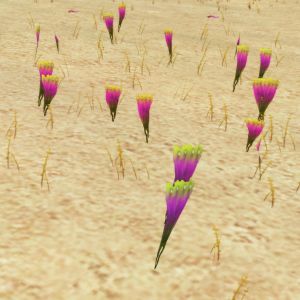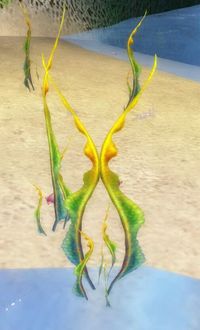Difference between revisions of "Dule"
From EncyclopAtys
m |
m |
||
| Line 16: | Line 16: | ||
|damage=n.a. | |damage=n.a. | ||
|}} | |}} | ||
| − | [[File:Saccha-Winter-L.jpg| | + | [[File:Saccha-Winter-L.jpg|200px|thumb|left|Sacchas in winter]] |
| Line 28: | Line 28: | ||
The '''saccha''' is consumed as food too, but it also produces a green dye used by artisans. | The '''saccha''' is consumed as food too, but it also produces a green dye used by artisans. | ||
| − | + | [[File:Saltorns-Summer.jpg|300px|thumb|left|Saltorns in summertime]] | |
{{Clear}} | {{Clear}} | ||
{{last version link|Dule}} | {{last version link|Dule}} | ||
Revision as of 22:22, 27 July 2019
| Taxonomic Amber | |
| Dules among saltorns in summer | |
|---|---|

| |
| Kingdom | {{{king}}} |
| Category | {{{species}}} |
| Main Ecosystem(s) | Lakes |
| Counterattack type | n.a. |
This short seaweed of webfoot shape is bright green in summer and displays various other colours in other seasons.
The dule often grows in the company of a smaller cross-stemmed species in the shape of tiny ladder, the saltorn.
Both of them have a peppery flavour and are eaten in salads in summer.
The high green algae in the luciogram opposite are sacchas.
The saccha is consumed as food too, but it also produces a green dye used by artisans.
Last version 2019-11-22•ᐒ
| |
| |





